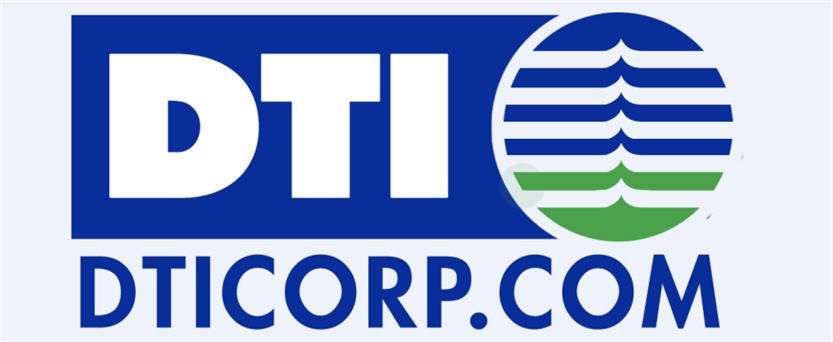
Energy management systems (EMS) have been demonstrating their value for more than 45 years. Managers in facilities ranging from small, single buildings to multi-million square foot complexes have cut energy and maintenance costs through use of the systems.
Energy management systems represent a significant investment for facility managers, both in time and money. Besides the cost of the purchase and installation, facility managers must spend time with the system designer identifying systems and components that will connect to the system, and the control strategies that will be used to operate those systems.
While most facility managers understand the steps that must be taken during design and construction to ensure system success, many overlook equally important steps to be taken during the operational and the transition to operational phases of an EMS project. These steps generally determine the system's long-range effectiveness.
Maintenance managers can take three steps that can be taken by facility managers to ensure they get the most out of their EMS investment:
- performing an acceptance test
- completing several levels of training for system operators and maintenance personnel
- performing routine and PM tasks over the system's operational life.
One of the most overlooked tasks in an EMS installation is the performance of an acceptance test. Too often, managers accept a demonstration of system operation in place of a thorough acceptance test. Demonstrating the operation of system start/stop operations, temperature reading or resetting capabilities is no indication of the proper system operation.
In contrast, an acceptance test is a formal procedure used to test the system. It is designed to force the installed system to demonstrate the proper operation and calibration of all field devices, the integrity of the communication system and the operation of the system software. Depending on the size of the system, testing may run weeks or months. Problems, as discovered, are added to the contractor's final punch list, with system acceptance only after they have been corrected.
The acceptance test is not a single test but rather, a series of tests. It starts with a visual inspection of all components to verify compliance with contract specifications and manufacturer installation requirements. Inspect all wiring for workmanship and code compliance, and inspect all components for damage.
The next portion of the acceptance test should be designed to verify the points installed as part of the system. Test digital input devices, such as door alarm contacts, in the open and closed position, and verify the readout at the central console. Command digital output devices, such as motor start/stop points, to both states, and verify in the field the operation of the device being controlled.
Digital input devices, such as temperature sensors, should have their operation simulated and verified through their entire range. Digital output devices, such as thermostatic controls, should be commanded to 0, 25, 50, 75 and 100 percent of full-scale output and the response of the device being controlled verified in the field.
Completing the acceptance test
Once system components have been verified for proper installation, test the operation of the system hardware. To run this portion of the acceptance test, the entire database of programmed start/stop times, control setpoints, control sequences, and alarm limits must have been loaded into the system. Start the system, place it in automatic operation, and run for a period of time, typically two to three weeks.
Note individual component failures, such as a temperature sensor, and add them to the project punch list. If a major failure should occur, such as loss of communication between field devices and the host computer, the test is generally terminated. Once the problem has been identified and corrected, the test is started over rather than continued from the previous point.
When testing is complete, the contractor should turn over to the facility and maintenance managers:
- a list of all points in the facility, certification that all points are operating properly and are calibrated properly
- a written record of all tests and measurements
- an explanation of all failures and discrepancies.
Training
Accepting a properly operating system is only half of the battle. The system will provide no benefit unless it is operated properly, which requires training of the staff who will operate and maintain the system and its components.
There are several levels of training to complete. Operators must be trained in the basics of system operation. Besides needing to know how to get information out of the system, operators will have to know how to:
- enter or change start/stop schedules
- set control points
- define normal operating ranges for systems and components
- enter alarm settings
- define control sequences.
Most important, operators will have to develop a basic understanding of the systems controlled by the EMS, how they operate and what the impact of the control actions they initiate through the system will be.
If you plan to maintain the system in house, a second level of training will be required for those performing the diagnostics and maintenance on the system and its components. Two types of technical skills will be required; electronics and temperature control. Electronics training will be required to work with the data cards, communications equipment, specialized test equipment and computer hardware. While some basic electronics training may be required, most should be targeted for the specific system installed.
Similarly, maintenance personnel will need training in the operation and maintenance of temperature control equipment. Besides general training in the operation of temperature control systems, maintenance personnel should receive training in how the EMS carries out control sequences to assist them in diagnosing control problems.
Finally, there will have to be training related to the central computer. Fortunately, the use of PCs to drive today's EMS has greatly reduced the level of training to less than what was required for early-generation systems. It still will be necessary, however, to train some operators in more than just basic computer operation. They may not need to know how to repair personal computers, but they will need to know how to work with the system hardware and software.
Two-pronged training
There are two approaches to completing EMS training; on-site or factory-based sessions. Except in the case of very small systems, use both approaches. Factory training for operators and technicians using simulators is good for both introductory and advanced training programs. It lets trainees learn basic operations without endangering facility equipment or inconveniencing occupants. Factory training also lets operators and technicians see the results of complex control and diagnostic actions.
On-site training is ideal for teaching both operators and maintenance personnel the specifics of that particular installation. Where control points and sensors are located, how systems interact; all are site specific and best understood when working with the installed system rather than a factory simulator.
Training does not end with acceptance of the system. Besides taking more advanced training to improve their skills, all personnel working with the system should take periodic refresher training. This training is designed to reinforce the skills they learned during introductory training and to weed out bad habits that have developed. To keep system personnel effective, schedule these training sessions regularly - at least once a year.
Post-installation activities
Energy management systems are complex electro-mechanical systems that require regular preventive and corrective maintenance to remain effective tools. At least once a year, all points in the system should be verified following procedures similar to those used when the system was accepted.
The functions of most digital output points are verified daily or weekly as a result of normal system operation, but other points must be verified manually. Analog input and output devices must be verified and recalibrated as the result of drift in sensors and actuators. All digital input points must be verified manually to ensure proper reporting of change of state.
Energy management systems are not static. Changes will be made to the way in which systems and components are configured. Sensors will be changed out or moved to new locations. New sensor and control points will be added. Software will be modified or upgraded.
If the system is to be kept manageable, all changes must be documented as they are made. Without such documentation, it will be difficult or impossible to know what is installed where. Good documentation also helps maintenance personnel track down system problems quicker and more accurately.
By performing these three tasks - performing an acceptance test, training personnel and documenting system changes and expansions - maintenance managers will greatly increase the long-term effectiveness of the investment in energy management systems.

